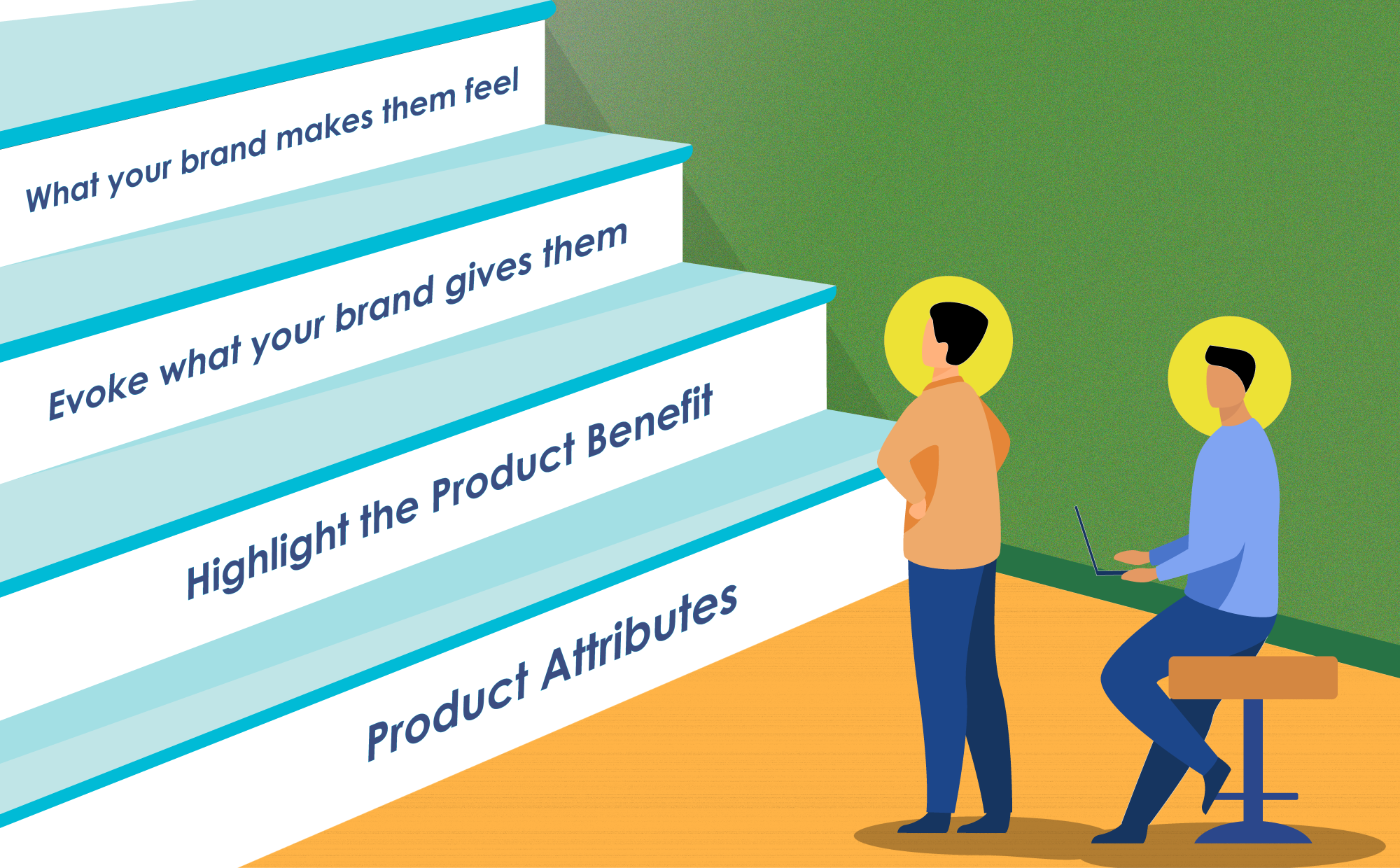Creating an advertising campaign with the stair of benefits
You cannot promote a starting business as a two or three-year-old business. Entrepreneurs should not promote a new restaurant the same way as McDonald’s does; not under the same length, copy or tone.
Regardless of the same audiences, the arguments you choose to promote your business need to follow the law of the stair of benefits if you want to succeed
What is the stair of benefits?
The stair of benefits involves four main steps that show you where your brand is and how you must build the message of your campaign. First, regardless of traditional or non-traditional marketing, you need to be conscious of what your message is every time you address your target.
First, let's build a memory
To understand why you need to apply the stair of benefits to your advertising campaign, you first need to understand how memory works.
How can something stay on our minds when we have so many messages on our devices, at the workplace, and even in the street? We need to examine how the human brain works and what type of stimuli can help it create a memory to buy your product or service.
If you are familiar with marketing, you know that a brand needs to provide some satisfaction for a specific need to a specific type of audience; basically,
If you are familiar with marketing, you know that a brand needs to provide some satisfaction for a specific need to a specific type of audience; basically, that is the same dynamic that long-term memory follows to create and associate specific value to certain subjects.
An article about behavior and memory from Harvard University gives us a way to identify how memory works and its different phases in the short and long term.
In the article, memory is the continuous process of information retention over time, composed of three phases: Encoding, Storage, and Retrieval.
Here, we first learn information using four methods: visual, semantic (signs), acoustic, and tactile. The information will enter our memory system using some or all of these methods.
This phase refers to how, where, and for how long we retain information in our brains. Here comes the two types of memory: short and long term. In this memory stage, repetition is foundational in determining which type of memory we will retain.
This part considers the section where the individual access the information. In short-term memory (STM), we retrieve memories in sequential order, one piece of information after the other; while in long-term memory (LTM), our minds reproduce memories through association (the so-call memories that bring us one feeling filled up with different sensations.
Repetition is the key
Creating a brand and launching a campaign is pretty much going through these three steps over and over while converting an STM (a message that could be an ad, letter, poster, or display) into an LTM.
We can achieve this objective by using elements rightfully placed, edited, and repeated over time.
By the way, remember that before you engage in advertising campaigns, you must answer what your company’s marketing challenge is and what is your positioning in the market (Here, I introduce in detail what a marketing challenge is)
However, we can condense the concept by saying that a marketing challenge is what perception or idea about your product or service you need to change in your audience to sell your product.
The brand positioning is how you define your product in detail (Here, we include product category, target, key benefit, and the reasons why your product delivers the benefit.)
Let's explain the Stair of Benefits
From bottom to top, each well-managed product or service will go through all the stages at some point:

- First step: Product Attributes. The base of all advertising campaigns (What your product is, how you make and how you provide your service).
- Second Step: Highlight the Product Benefit (What your product or service does that differentiates them from the competition).
- Third Step: Remind your audience what your brand gives them (What experience they will receive).
- Fourth Step: What your brand makes them feel. (Happiness, aroused, relieved, etc.).
First step: Product Attributes
In this step, we highlight the characteristics of the product. Our message must include the essential characteristics of what we offer in simple words what your product does, how it does, when, where, and why people would buy it.
We can also season this step with other information, but we must highlight the most basic attributes above anything else.
The first step in the start of benefits is crucial for products that are introduce to the market for the first time and when the audience has little to no idea what the product or service is about.
The first step is the most important
In this first step, the message is more attached to the physical traits of the product (creativity here assists in sending the message, but it comes second in matters of space and time. Next, the copy must come straightforward because there is a lot of information that we need to include in the piece.
The first stage is also easily identifiable because the copy repeats the name of the brand numerous times -to build STM- and it also has the brand logo easily visible as the ‘main character’ in all the advertising pieces.
Decades ago, advertising companies used to buy an entire page in magazines and newspapers to explain the product attributes. Today, we do the same with online videos and TV ads.

Pepsi and Oreo used to create ad like this to clarify what they were when starting to introduce to a new market.
Dr. Squatch created a video highlighting its attributes so audiences can identify the differences with the rest of soaps.
Second Step: Highlight the product benefit
After some of your first monthly seasons performing your first product campaigns, your audience will know what type of needs cover your product.
Therefore, your consumers can quickly identify your product colors, design, name, and tone, which means now you can focus on why your product is better than your competition.
Notice that you still must keep stating your attributes in your messages. However, now you can reduce the number of times the message mentions your brand and replace it with the reasons that make your product more desirable than the competition (Direct and indirect competition).
Also, the advertising agency (the creativity team) will have more space and time to add visual elements to your message if these complement the final goal of your campaign, of course, allowing your product to reach the next step in the stair of benefits.

G-shock is very descriptive in its pieces. They always remind consumers why they are a tough brand.
Steps in between
Third Step: Remind what your brand gives them
Here you can let the product breathe more while highlighting the experience your product or service conveys each time consumers purchase, carry, consume, or share it.
When we mentioned conveys, we talked about LTM.
However, as we already worked on STM during the first two steps and built a memory based on colors, shapes, sounds, and repetition, we can now, based on focus groups and analysis of the maturity of our brand, share our brand also gives them momentary quench of metaphysic needs.
Set New Goals!
Showing freedom, enjoyment, calmness, happiness, excitement, or even a mixture of them and or other emotions are our new goal.
Many brands choose to remain in this step because it is safe and allows them to communicate effectively without going full art mode (The fourth step is mainly use for super-known brands and super-premium products).
However, it is also an excellent choice to have a solid 3rd step as a regular way to keep a brand close to the consumer because of the competition and to create constant awareness to near audiences that come across our product or service.

John Deere shows what you are capable to become.
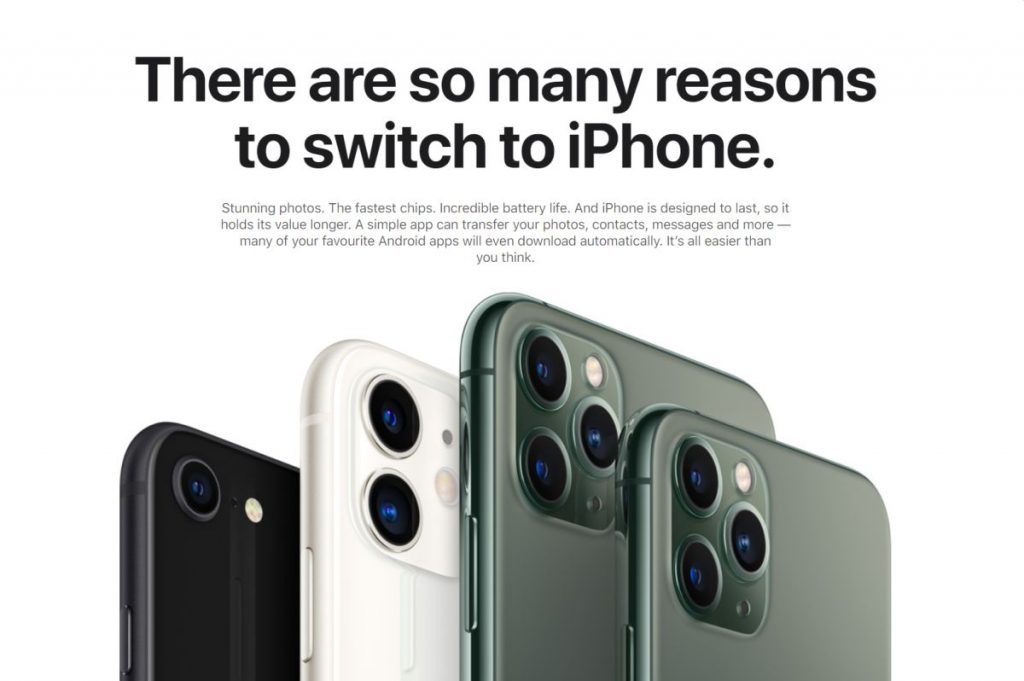
The Apple iPhone is well known and their size, clean shape and thinness.

L.L.Bean is well known and now they have no need to explain what their brands does.
Important: In advertising, some collaterals are a better choice than others to advertise specific steps of the stair of benefits. Like magazines, Internet videos, TV and radio for the 1st and 2nd steps; while posters and outdoors for the 3rd and 4th steps. This media choice is not a rule and may vary according to the market and marketing goals.
Fourth Step: What your brand makes them feel.
This step is the final and most hard to achieve. However, it is not something that all the brands must pursue as a final objective, but more of a benefit that brands can use to support their position in the market as a leader in that category.
Entrepreneurs usually confuse this fourth step with mere branding.
Although this is understandable because, as its name suggests, branding is more about reminding the brand than selling or promoting a product, it doesn’t mean it will replace every objective of the marketing department.
Branding campaigns must continue a different path than regular marketing campaigns. In other words, you can have branding campaigns in any of the four steps or the stairs of benefits.
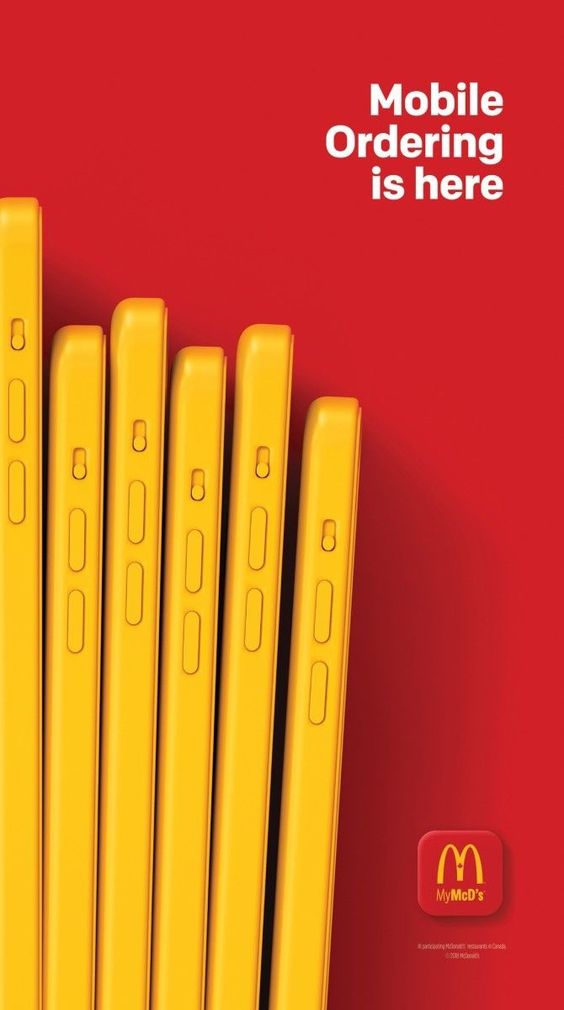
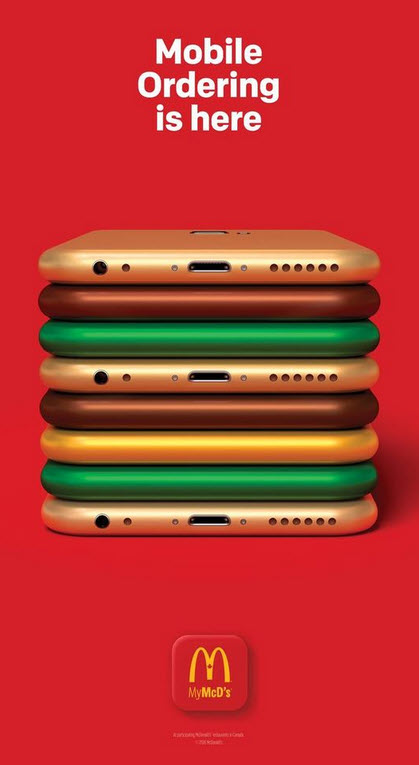
If you don’t known what McDonalds is and what it does you will have trouble finding out the purpose of this ad.

Iphone advertising takes advantage of its positioning while working with insights all the time.
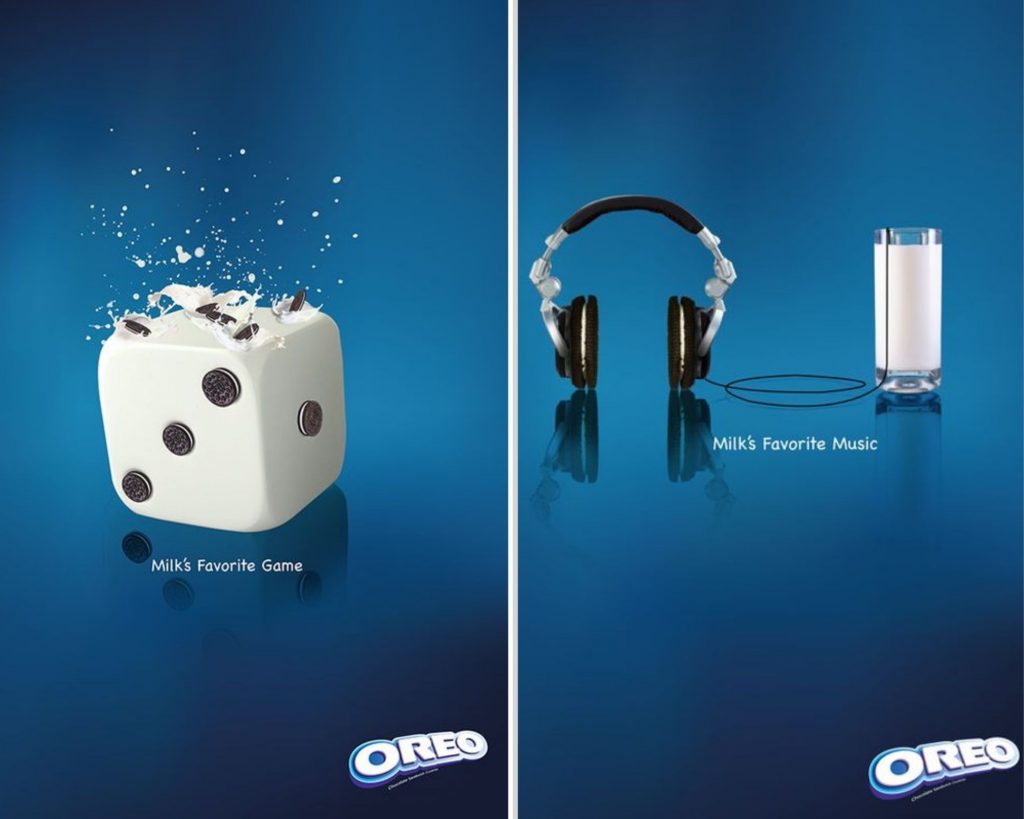
Now that everybody knows what Oreo + milk means, the advertising has more art vibes than copy.

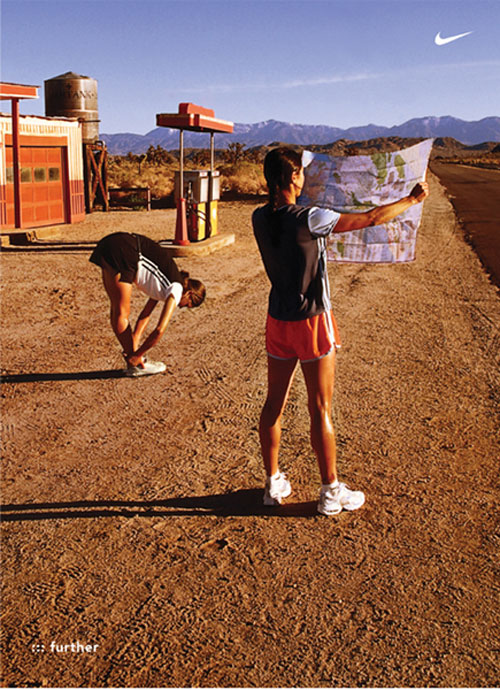
Nike and the word ‘running’ has also been repeated and now the audience knows what is means and what to expect.
Exceptions! There is also some type of advertising that takes the 4th step as its 1st step. These brands have little to no competition in the market, they specialize on the need of one type of audience, and are exclusive of a region or area. Marketers consider the 4th step as the best ‘mind state’ to create awareness campaigns.
Companies introduce these campaigns inadvertently into the market with impact tactics as a vital part of their market strategy. In other words, you probably won’t see them again next year. Here some examples:
Advise to Entrepreneurs
When you hire an advertising company, regardless of your company’s stage, you might receive ad proposals that might look like a 4th step on the stairs of benefits. My advice is not to accept them blindly because creativity must aid the message your company needs to fulfill to reach your goals and not the other way around.
Many small to medium companies fail to understand the importance of following marketing objectives, and after being convinced and impressed by creativity teams thanks to some neat and beautiful advertising piece, they notice their campaigns have had little to no success.
Frustration assaults entrepreneurs because they are not showing what the 1st step mandates: First, show your attributes and the physical reasons why your audience must choose your product or service.
Remember to follow this advice to have a successful campaign. See you soon with more marketing knowledge!
By Eduardo Guillen Garrido.

